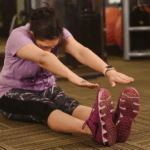Now Reading: How to Detect a Liar in Seconds Using Nonverbal Communication
-
01
How to Detect a Liar in Seconds Using Nonverbal Communication
How to Detect a Liar in Seconds Using Nonverbal Communication

Become a human lie detector in seconds through the power of understanding nonverbal communication.

Unveil the secrets of body language and master the art of lie detection, equipped with only your keen observation skills and an understanding of the human psyche. In this comprehensive guide on How to Detect a Liar in Seconds Using Nonverbal Communication, you’ll find in-depth knowledge and practical steps to empower you to spot deception swiftly.
The Science Behind Deception
Lying, believe it or not, is a complex cognitive process. It’s not just about spewing falsehoods. There’s a lot more going on beneath the surface, in the labyrinth of the human mind and body.
Psychological Foundations of Lying
From a psychological standpoint, lying involves a cognitive load. Essentially, when we lie, our brains are working overtime to concoct a story, maintain it, and ensure it aligns with reality, or at least what the listener perceives as reality.
The Physiological Response to Deception
Deception often triggers a physiological response in the body. Stress hormones spike, heart rate accelerates, and sometimes even our body temperature rises. While these symptoms may not be visible to the naked eye, they can influence our nonverbal communication.
Unraveling Nonverbal Communication

Nonverbal communication is like the silent language of truth. It’s your job to translate it.
Understanding Body Language
Body language refers to the conscious and unconscious movements and postures by which attitudes and feelings are communicated. An individual’s body language can often reveal what their words try to hide.
The Role of Facial Expressions
Our faces are capable of expressing a myriad of emotions, even those we try to suppress. Watch out for fleeting, inconsistent expressions that contradict a person’s verbal statements.
Decoding Vocal Cues
Even without words, our voices communicate volumes. Changes in pitch, rate, volume, and tone can all be potential indicators of deception.
The Art of Lie Detection
Lie detection is not an inborn talent; it’s an acquired skill. And like any skill, it requires practice and finesse.
Spotting Inconsistencies
Inconsistencies between a person’s verbal and nonverbal communication are often a telltale sign of deception. If the words say one thing and the body language says another, chances are there’s a lie lurking somewhere.
Observing Microexpressions
Microexpressions are brief, involuntary facial expressions that appear for only a fraction of a second. They often expose a person’s true emotions, making them valuable in detecting deception.
Understanding Defensive Body Language
Defensive body language, such as crossing arms, avoiding eye contact, or physical withdrawal, can also be indicative of deception. It’s as if the body is trying to shield itself from the untruth.
Using Nonverbal Cues to Detect Lies
There’s no single, foolproof sign of deception. However, certain nonverbal cues can heighten your suspicion.
Eye Contact and Lying
Contrary to popular belief, liars don’t always avoid eye contact. In fact, sometimes they maintain too much eye contact, as if trying to convince you of their honesty.
Gestures of Deception
Deceptive gestures vary, but they often involve self-touching, hand-over-mouth actions, or even excessive hand movements. It’s like the body is trying to distract you from the lie.
Posture and Lying
A lying individual might assume a closed, defensive posture. They might also exhibit signs of discomfort, like shifting weight or fidgeting.
Understanding Lying Patterns

Not all lies are created equal. Recognizing the patterns can provide you with a head start in detecting them.
Baseline Behaviour
Everyone has a “normal” way of behaving when they’re relaxed and truthful. Establishing this baseline is crucial to discern when someone deviates from it.
Deviations from Normal Behaviour
Significant deviations from a person’s baseline behaviour can be a red flag. Suddenly, a usually animated individual becomes still, or a typically reserved person becomes overly expressive.
Patterns of Dishonesty
Some people have habitual signs of lying, like rubbing their nose or covering their mouth. Identifying these patterns can make lie detection much easier.
How to Detect a Liar in Seconds Using Nonverbal Communication
No lie detection technique is foolproof, but having a keen eye for nonverbal communication can give you a head start in detecting falsehoods.
Quick Reference Guide
Here’s a quick guide on how to detect a liar using nonverbal communication: observe for inconsistencies, watch for microexpressions, understand defensive body language, notice eye contact, decipher deceptive gestures, evaluate posture, establish baseline behaviour, and watch out for deviations.
Practicing Observational Skills
Practicing your observational skills can drastically improve your lie detection abilities. Remember, practice makes perfect.
Mastering the Art
Mastering the art of lie detection takes time and patience. But once you do, you’ll be able to detect a liar in seconds.



















